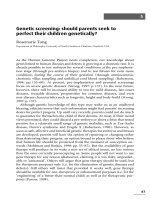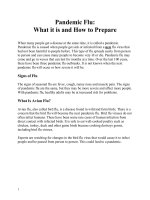Should and Ought to
Bạn đang xem bản rút gọn của tài liệu. Xem và tải ngay bản đầy đủ của tài liệu tại đây (65.27 KB, 1 trang )
Should and Ought to
Use:
Use Should and Ought to give advice.
Examples: You should see a doctor.
You ought to find a new job.
Form:
Should
Should is a modal verb, like can and will, so it follows the same rules.
1) Do not add ‘s’ to the third person singular.
He should buy a new car. NOT He should buys a new car.
2) To form a negative, add not / n’t after should.
You shouldn’t do that!
3) To form questions, invert should and the subject.
What time should we arrive?
4) Should is always followed by a verb in the infinitive form.
I should to go. =>I should go.
5) You can also use should in the continuous form. Use should + be + verb-ing.
Why are you watching TV? You should be working!
Ought
Ought is a semi-modal verb. It is similar to should in some ways:
1) Do not add ‘s’ to the third person singular.
He oughts to buy a new car. => He ought to buy a new car.
2) To form a negative, add not / n’t after ought.
You ought not to do that!
However, ought is not often used in negative sentences
3) To form questions, invert ought and the subject.
What time ought we to arrive?
However, ought is not often used in questions.
Ought is different to should because:
1) Ought is always followed by to + a verb in the infinitive form .
I ought go. =>I ought to go.









